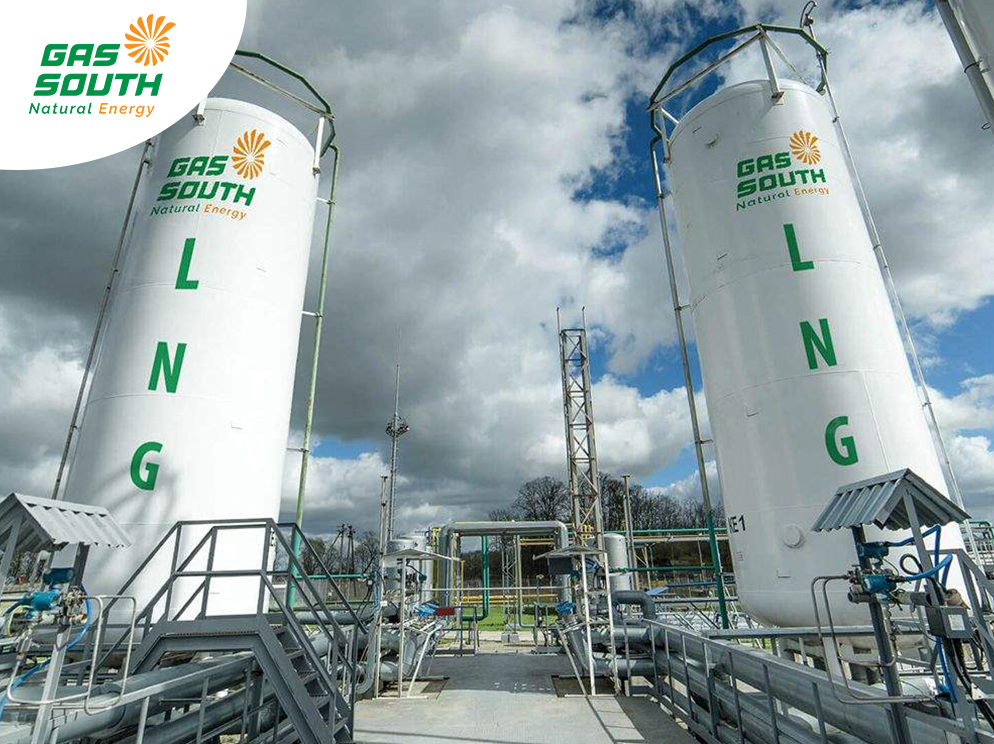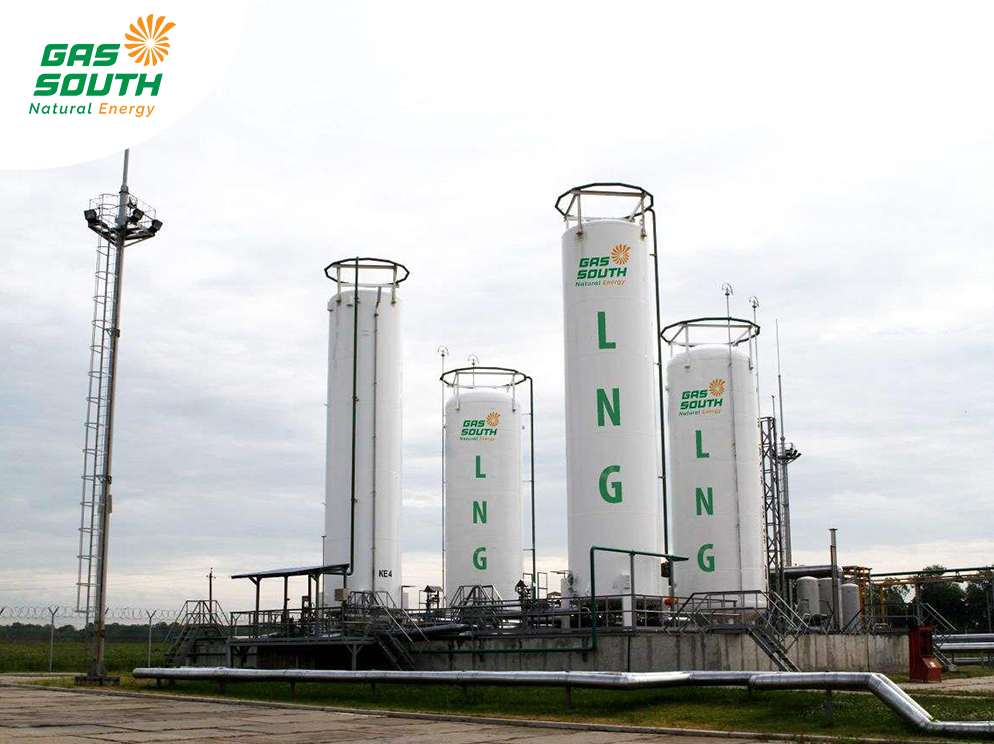In the ever-evolving landscape of the energy sector, liquefied natural gas (LNG) has emerged as a beacon of promise, heralding a future characterized by sustainability, efficiency, and environmental responsibility. Let’s take a closer look to discover its incredible characteristics and understand why LNG is the future of the energy sector.
1. What is LNG?
LNG, short for liquefied natural gas, is primarily composed of methane ̣(CH4), making up about 95% of its composition. The process of producing LNG involves chilling natural gas to an extremely low temperature of around -162oC. It is widely regarded as the cleanest form of fossil fuel, as its consumption results in fewer harmful emissions and does not produce ash or particulate matter that can harm the environment.
LNG is a transparent and scentless liquid. It is lighter than air and easily disperses, which makes it a safer option for storage and transportation. In the event of an unforeseen leak, LNG rapidly dissipates without leaving any residue behind. Furthermore, LNG has a considerably higher auto-ignition temperature compared to other fuels, ranging from 482 to 632oC, reducing the risk of combustion and explosion.

Liquefied natural gas
2. Is Liquefied Natural Gas Renewable?
LNG, along with other forms of natural gas, is considered as a fossil fuel. This energy source is created from the ancient remains of plants and animals, a process that takes millions of years. As a result, it is a finite resource that cannot be replenished within our lifetimes. Consequently, LNG is not considered a renewable energy source. Nevertheless, LNG is recognized as a cleaner option when compared to conventional gasoline and diesel fuels. By utilizing LNG, we can decrease our dependence on non-renewable resources.
3. Why LNG Is The Future Of The Energy Sector?
-
Abundance: One of the main advantages of LNG is its abundance. Natural gas reserves around the world are estimated to last for over 200 years, making it a reliable source of energy for the foreseeable future. In fact, many countries are now investing heavily in LNG infrastructure to tap into this abundant resource.
-
Versatility: LNG has a wide range of applications, from powering vehicles to heating homes and businesses. It can also be used for electricity generation, providing a versatile energy source that can meet various needs.
-
Cost-Effective: The production and transportation costs of LNG are relatively lower compared to other forms of energy. This makes it an attractive option for countries looking to reduce their dependence on expensive imported fuels.
-
Reliable Supply: LNG is a reliable source of energy as it can be stored and transported easily. This ensures that there is a consistent supply of energy, even during times of high demand or disruptions in traditional fuel supplies.
-
Economic Benefits: The production and export of LNG can bring significant economic benefits to countries with abundant natural gas reserves. It creates job opportunities, boosts local economies, and generates revenue from exports.

LNG - Clear energy for the future
4. What Is Liquefied Natural Gas Used For?
One of the main uses of LNG is as an energy source for power generation. It can be used in place of coal or oil to fuel power plants, producing electricity with significantly lower emissions. In fact, using LNG can reduce CO2 emissions by up to 40% compared to traditional fuels.
In transportation, LNG can be used as a fuel for trucks, buses, and ships. In fact, many shipping companies are starting to switch from traditional bunker fuel to LNG due to its lower emissions and cost-effectiveness. The use of LNG in transportation also reduces the dependence on fossil fuels and promotes cleaner air.
LNG is also being explored as a potential alternative to diesel in heavy-duty vehicles such as trains and mining equipment. With stricter emission regulations being implemented across various industries, the demand for cleaner alternatives like LNG is only expected to increase.
Apart from these uses, LNG also has industrial applications. It can be used as a feedstock for chemical plants, providing an efficient and environmentally friendly source of energy. In addition, LNG is being used in power plants as a cleaner substitute for coal and oil.
5. The Potential Future of LNG in Asia Market
The advantages of LNG over coal, such as its ability to firm up energy supply and its lower emissions, are becoming more apparent. This has led to a shift in energy mix preferences towards gas, particularly in Asian markets.
Asia is currently the largest consumer of LNG in the world, accounting for more than 70% of global LNG imports. This high demand can be attributed to a number of countries in Asia, who are major players in industries such as manufacturing, electricity generation, and transportation – all of which rely heavily on natural gas.
With concerns about air pollution and the need for cleaner energy sources, many Asian countries, mostly China and India, have turned to natural gas as an alternative to coal-fired power plants. Viet Nam is also a very potential market for LNG power generation, which has captured plenty of investors and enterprises interest.
See more: Some outstanding LNG projects in Viet Nam

LNG Project in Vietnam
Another factor contributing to the rise in LNG demand in Asia is the development of new infrastructure. Many countries have invested in building receiving terminals and developing pipelines to transport LNG from import terminals to end-users. This has not only increased accessibility but also reduced costs, making LNG more competitive with other energy sources.
Furthermore, Asia's geographical location plays a significant role in its high demand for LNG. Due to its large coastline and lack of domestic gas production, many Asian countries rely heavily on imports to meet their energy needs. This makes LNG an ideal solution as it can be transported via tankers and easily distributed across the region.
In summary, LNG has a very transformative potential. It not only meets the current demands of an energy-hungry world but also positions itself as a catalyst for sustainable development, that's why LNG is the future. Currently, Gas South - one of the foremost LNG suppliers in Viet Nam, is preparing itself to accommodate the needs of the Vietnamese market and align with the global imperative.





